Psvane TC5 integrated tube amplifier. Purchased through the Grant Fidelity website. Review by Tim Smith.
1,399 USD including shipping from Hong Kong.
http://shop.grantfidelity.com/Psvane-TC5-Integrated-KT120-Tube-Amplifier.html
The Psvane TC5 integrated amplifier is a stunning product. I would gladly pay double, perhaps even triple the retail price for this brilliant amplifier. I think the $1,399 Psvane TC5 integrated amplifier, available through the Grant Fidelity website, can compete with anything in the stables of the highly regarded firms Rogue Audio and Primaluna for under $4,000.
The early buyers of Primaluna’s fine products paid just $1,095 for amplifiers that are still going strong ten years later. Today that $1,095 Prologue One costs $1,800. It weighs in at 38 pounds, it lacks a remote control and it puts out about 42 watts of power using the KT-120. I would venture to say that those who purchase the Psvane TC5 will, like early Primaluna buyers, laugh all the way to the bank. To my ears the TC5 sounds better than the Prologue One–it has twice as much power, more speed and deeper bass, no doubt due to beefy transformers that bring the TC5’s fighting weight up to 59 pounds. The TC5 is more accurate than the Prologue One. As a bonus, the TC5 is less expensive, it has a remote control, and it is sexier looking. But the TC5 is a relatively new amplifier. If its track record were longer and the Psvane TC5 undoubtedly had a long life ahead of it, I would advise you to look at it the way I view Primaluna–like a working man’s Patek. Buy it with the confidence that you’ll ‘never really own it’ but will instead look after it for the next generation. Time will tell.
I took delivery of a review sample of the Psvane TC5 almost five months ago and each day I have been amazed at its performance. If I had begun my audio quest with an amplifier with such a high price-to-quality ratio, I wonder if I would have got on this crazy upgrade merry-go-round in the first place. For probably 95% of us, this is all the amplifier we will ever need. With the TC5 there is a touch of tube magic and a large dose of solid state’s finest attributes. The TC5 has no obvious weakness. If you are tempted to pay just $1,000 for your amplifier, you should stretch your wallet a bit more and buy the TC5. It’s probably as good as or better than 95% of its rivals under the $4,000 mark. If you are thinking of spending up to $5,000, consider this amplifier.
This is the third KT-120 based amplifier I have owned or reviewed. Each and every one of them has been simply marvellous. The same goes for those other amps I have heard in retail showrooms or at audio shows. The KT-120 tube is powerful and clean, smooth but accurate. The KT-120 is never slow and syrupy. The 6sn7 input tube has got a touch of honey but its sonic signature in this configuration is characterized more by linearity and holography. It’s not light and hollow the way a high resolution solid state amp can be, nor does it serve up larges doses of ripe and meaty overtones. The TC5 is more of a straight shooter leaning towards accuracy rather than romance. The amp blooms, yes, and sends woodwinds soaring through the room, but it does not embellish or exaggerate. There is bass to rival solid state amps costing $5,000.
As I write this Kenny Burrell’s CD ‘Round Midnight is playing. “Since I Fell For You” is so clear, so transparent, but without any bright edges. Burrell’s guitar has got unusual bite and verve. There is a laser-like focus. The notes are well defined from leading edge to decay. Drums and cymbals are crisp and clean. This is no warm single-ended 6L6 amp; there is no thickness or bluntness, no warm fuzz around the edges. The sound and the vision is clear and luxuriant like a deep blue sky. It’s not nearly as warm as my 845-based Line Magnetic amp. Two words come to mind. This amp is clean and muscular. It has snap but no etch. The pulsing beat of Bowie’s TVC 15 is no challenge at all for the TC5. As I transition to classical, it’s more of the same. With Beethoven’s Emperor Concerto there is muscle galore and what’s more, the TC5 excels in setting the soundstage table before your eyes. It’s hologramic indeed. The rattle of the strings on the double bass in Jacques Loussier’s Satie: Gymnopédies, Gnossiennes is startling.


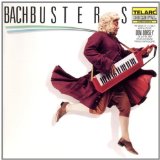
The TC5 retrieves ample micro-detail but it never grates one’s nerves in the process. It worked very well with my large library of Naxos classical guitar recordings. I heard more detail, more scrape and nail, more air than I am used to. I felt a little bit less warmth than I get from my other amps, but there was enough to please me.
The TC5 can turn on a dime. It has bass to rival my 845-based amp. It is not disgraced by my Class D Wyred4Sound muscle amps. The third track on Don Dorsey’s brilliant Bachbusters CD (Telarc 80123) is the “Presto” from the Italian Concerto. This muscular amp shocks with its speed. Synthesized Bach is blisteringly fast. We are talking Naim-like PrAT here with the golden glow of tubes. The TC5 is a ‘please most people most of the time’ amp, a versatile all-rounder.
High-end companies like Audio Research and Jadis have taken advantage of the wonderful KT-120 tube but precious few firms at the low end of the price spectrum have jumped into the fray. It might have something to do with the high-quality irons needed to pair with the tube. The Psvane’s irons are indeed big, heavy and silent. A cheap, 12 pound single-ended 6L6 or EL34 amp is a simple thing to knock off but it will likely buzz like a bee hive. A KT-120 equivalent will require much bigger irons and the scales will tip at 14 kg or 30 pounds for starters. Push-pull configurations will weigh in closer to 23 kg or 50 pounds.
In the lower-mid and mid-range, there is some activity in the industry, as more and more firms, like the British/Chinese firm Icon Audio, take up the KT-120 tube. North American readers will be more familiar with Primaluna and Rogue Audio. I view these firms as the chief competition. With the Psvane, as with the Primaluna (less so with the Rogue) you’ll get the same black quiet spaces between notes and virtually no hum, neither at your speakers, nor with your ear close to the transformers. You’ll get even more thunder down below–there’s no question this amp has first rate, solid-state quality bass. The taste is not as sweet as Primaluna but it’s faster, more captivating. I am less familiar with Rogue, and on less firm ground in my comparisons, but from what little time I have spent in the company of Rogue’s products, I think the Psvane is just as good as Rogue’s entry level KT-120 based amp, if different.
In any case, if there was ever any doubt in my mind that the KT-120 is the most significant development in tube technology since the 1960s, the Psvane TC5 amplifier has put such doubt to rest. It is impossible to build an EL34, 300b, 2a3, 845 or 211-based amp this good for this low price. Somehow Psvane has managed to make a 59 pound amplifier that taps into all the promise of the wonderful KT-120 power tube and that comes with a user-friendly remote control without breaking the bank. Labor costs in China are far higher today than they were ten years ago, and yet Psvane has pulled it off. When one factors in the recent drop in the Canadian dollar and the tax one must pay upon the amp’s arrival, we are talking about 1,800 CAD. American consumers–those lucky holders of the world’s reserve currency–will likely pay about 1,500 USD in total. In an email, Rachel of Grant Fidelity wrote “we will cover any excessive charges imposed by customs at delivery time if the amount is over the tax amount that a customer would pay for same value item at a local store. So buying online with Grant Fidelity will never cost a customer more than he/she buys the same item from a local business when factoring in the local sales tax. We will refund the excessive amount once customer presents us the customs bill in .pdf or .jpg file plus a proof of payment.” That is quite an impressive commitment.
Even with the recent drop in the Canadian dollar and the euro, the Psvane TC5 is still something of a best buy in audio. I think with the TC5 we are coming close to Audio Research VSi60 sound quality, for one-third the price. The TC5’s ability to capture air, ambience, soundstage cues on that old chestnut, Brubeck’s “Take Five,” reminds me of the ARC VSi60, an amp I have heard at length with my reference Harbeth Compact 7 ES-3s. The TC5 can also track Christian McBride’s bass down to the lowest octave and it can follow Roy Hargrove’s trumpet as it soars to the sky. No bandwidth limitations apparent here. Nothing Primaluna makes in this price range can compete with the Psvane TC5’s bass prowess. If you’d like to buy American, then by all means go Rogue. But you’ll pay 2,295 USD plus state sales tax for a Cronos Magnum, a $900+ premium.
Above: Psvane TC5 on the left, not out of place amidst pricier gear. The TC5 sang with Harbeths and Tektons. It also worked very well with some Unity Audio “Inner Soul” speakers I have on review for WallofSound.ca. The TC5’s high output but low noise floor bodes well for those of us with high-sensitivity speakers, like Tektons.
What’s in a (brand) name?
In Mel Brooks’ History of the World Part I (there was never any plan to make Part II), Moses initially has three clay tablets–each containing five Commandments–as he appears on Mount Sinai. Upon dropping one tablet, ‘Moses’ is forced to ‘ad-lib’ and adjust the narrative. Rumor has it Psvane was originally supposed to be named Pavane but a typographical error on the company’s first production run of tubes forced the name change. Whatever. The point I wish to raise relates to branding, and it’s a common issue across several Chinese industries–nothing against Psvane in particular. Consider wristwatches. The vast Chinese emporium abounds with brilliant (and lousy) watches, some in the ‘homage’ style, some downright counterfeits and some truly original. With all the millions of watches made each year in China, there is not one single brick and mortar, conventional company with a solid retail and distributors’ network in North America or Europe. The Chinese have been slow to ‘get’ the idea of branding. There is nothing like Seiko, Orient or Citizen, three well-established Japanese firms. It would be foolish of the Chinese watch industry to compete, right away, with Swiss giants, but it hasn’t even tried to compete with the Japanese. Something similar is going on in the audio industry. Apart from Psvane and Shuguang, there are really no big players who operate independently of a European or North American engineering wing and/or facade. Given the sheer volume of production in the Middle Kingdom, this is somewhat perplexing. It probably comes down to the hyper-decentralized nature of the industry and the loose attitude toward copyright and patent protection. Until the Chinese industry literally comes ashore and plants its flags and its inventory in North American strip malls and warehouses, most of its offerings will fall into some sort of not-quite-ready-for-prime-time gray zone. It’s one thing to buy, sight unseen, an amp from Odyssey Audio in Indiana. I’ve done it. It’s a more complicated thing to buy, sight unseen, straight outta Kowloon. I’ve done it, I’ll continue to do it, but I am aware there is a slight chance of a bumpier road in the even of a product malfunction. If you are uncomfortable with the idea of sending an amp to a reputable repairman in, say, Hamilton, Ontario, and would prefer to walk the amp into a store on Main Street (who will likely send the amp to the same repairman in Hamilton) don’t buy this amp. I happen to believe you should take the plunge and buy that Hong Kong amp. Nevertheless, I offer you this mini-treatise on the economics of Chinese audio.
What you will not get with the Psvane is the (misplaced?) peace of mind that comes from buying an established brand based in North America. The Psvane TC5 is a “final sale without return or refund.” It’s a new product, it’s a brilliant product, and I’d buy the review sample if it were for sale, but it’s also one without a typical one-year warranty. That’s because Psvane lacks a conventional brick-and-mortar retail support system in North America. On the surface this might seem like a risky business model. It seems to require a leap of faith on the part of the consumer. Have no fear: Grant Fidelity (GF) is a widely respected outfit based in Calgary and Psvane is a world-leader in vacuum tube technology. GF and Psvane provide schematics and lists of potential repair shops to assist you should you encounter a problem. So why should you trust Psvane and Grant Fidelity? Search the web and you will find many happy customers of GF-commissioned amps over the years. Consider the company’s legendary DAC. Over the past decade, GF has cultivated its contacts with some of China’s leading manufacturers. There is a track record here indeed. With the TC5, you are buying something less than a Pennsylvania-based Rogue Audio-like warranty. But you are buying something more–much more–than a second-hand sale over Audiogon or an e-Bay like transaction of a Parnis watch, a ‘brand’ made by several factories and sold by dozens of independent eBay dealers.
Psvane is nothing like Parnis, and no fly-by-night firm. Quite the opposite. The Psvane tubes I own are among the very best ever made in their class. Ever. Their KT88, 6CA7 (EL34) and 845 tubes are better than any vintage or NOS tubes I’ve heard. (Stay tuned for a WallofSound.ca review of two wonderful Psvane 845 tubes). Psvane is a respectable firm filled with engineering prowess to match any European or North American firm. Psvane has a good track record making large 845-based amplifiers, KT88-based ones, and many others. What it lacks, regrettably, is a traditional North America-wide distribution and retail network with, say, 20 to 50 dealers spread around the continent. Given the high quality of Psvane goods, I believe this is a great missed opportunity. I say this not to denigrate the company, but rather to express my wish that Psvane spread its wings and come inside the North American market, big time, with stocks of gear here, sur place, in inventory, ready for the immediate taking. This would constitute some sort of service to audiophiles and it would work from an economic point of view too. But, looking on the bright side, and seeing the glass half full, perhaps we ought to tip our hats and raise our glasses to Rachel from Grant Fidelity in Calgary for taking the effort to make these fine products available to the average Canadian hoser, Joe Sixpack and Jean Bonhomme.
Above: the TC5 excelled with oud and clarinet. It was utter clarity. Everything from Cream to Mahler worked. Marsalis’ trumpet soared. The one area in which I found the TC5 did not positively excel was with vocals. Here I found it perfectly good and perfectly normal. It just did not amaze me with vocals the way it did with bass, speed, and soundstage. It’s not a 2a3-based amp, so to be fair, I should not have expected the moon.
Time to dismount my soapbox and tip my hat once again to Grant Fidelity and Psvane. This amp does it all. Speed and PRaT? You bet. Can it keep pace with Jeff Beck on his ‘Freeway Jam’? Check. Deep and unusually dry bass for a tube amp? Can it boogie with Geddy, Stanley and Jaco? Without a doubt. High voltage? Done dirt cheap. A $1,399 USD (plus tax) integrated tube amplifier with remote control putting out 85w is a fabulous bargain. The TC5 uses the wonderful and widely available 6sn7 input tube—four of them, in fact. I bought a few pairs of NOS Sylvanias and was very impressed with the sonic changes. This amp responds well to input tube rolling. Don’t worry about the power tubes: forty-five dollars for a high-power tube must be considered inexpensive these days. Four KT-120s can produce up to 100W of power. Some producers squeeze just 50 to 60w from four KT-120s in ultralinear configuration. This amp maxes out at a claimed 85W. The power tubes are mated with heavy irons and they are not run particularly hot, something that bodes well for tube life. After two hours of playing music, the transformer covers do not get warm. Tubes are biased easily, with built-in meters. Add your screwdriver once every couple months, and after 30 seconds you’re good to go. The irons are hand-wound OFC copper wire based. They are well made for there is almost no hum or hiss from my speakers and zero mechanical hum from the transformer laminations themselves. A long list of high quality components and features is the icing on the cake—ALPS volume pot, WBT connectors, MKP and Rubycon capacitors, high quality copper and silver wire, an attractive tube cage, 3 sets of RCA inputs, a muting function, a soft-start function to prolong tube life, and a small and effective remote control.
Above: Bavouzet’s Debussy is a dish best served warm. For piano, I prefer a little more thermionic haze. My 845-based amp works better for me. For acoustic and electric guitar, the TC5 did a wonderful job capturing micro detail and reverb. With the 845 it’s like you’re seeing from within the fog (and that’s good, at least to my taste, although others might disagree). With the TC5’s KT-120s, your vision is clear, and there’s less romance in that. The TC5 is probably more true to life than my Line Magnetic amp. At this level of quality, it’s a question of individual taste.
Paired with my Tekton M-Lores the TC5 produced thunderous rattle-the-floor bass. Tuneful, articulate bass. Oodles of detail. Crystal clarity. There was almost no noise through these 95dB sensitive speakers. There was no hum at all; just a tiny, tiny bit of tweeter hiss. Every tube amp will have that. I heard some of the most realistic cymbals I have heard in my house. In general I found the soundstage to be somewhat in the back, but with images firmly anchored in place.
Above: This is a versatile amp that will please most people most of the time. But I was surprised that it could not get my Maggies to sing. Even with its 85w real tube rating, it could not deliver sufficient current in my small room to my Magnepan 1.7s except with solo piano and guitar, where it fared very well. A 36w Primaluna Prologue One had no trouble with my departed Magnepan MMGs. Either this means the 1.7s are far more power hungry than the MMGs (the most likely scenario), or the Psvane TC5’s 85w rating is…overrated.
I have owned two Primaluna Prologue Ones and enjoyed them very much. They left the house to fund other amps. Until I plugged the Psvane TC5 into my Harbeths and Tektons, I had lamented the loss of these fine amps, thinking myself foolish for parting with them. No more. This Psvane TC5 is, as far as I am aware, audio’s best buy–assuming that quality control is high. The TC5 is probably too new to answer that question. But over the 18 weeks I have had the TC5 in my house, it has performed flawlessly and has amazed me with each listening session. Highly recommended.
[views]

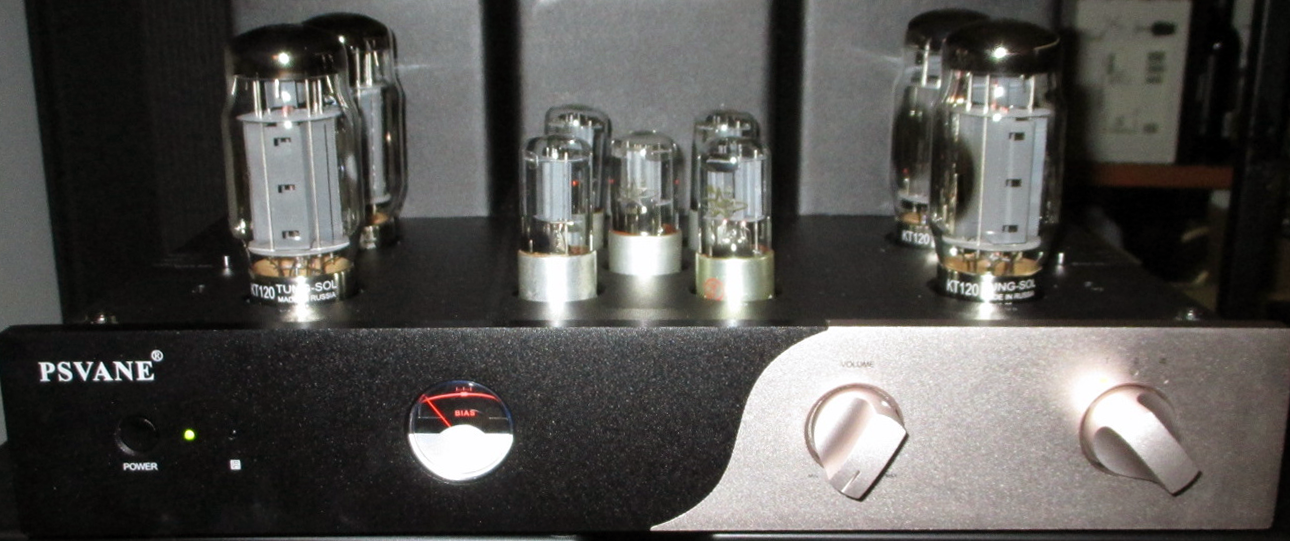

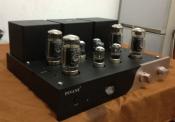



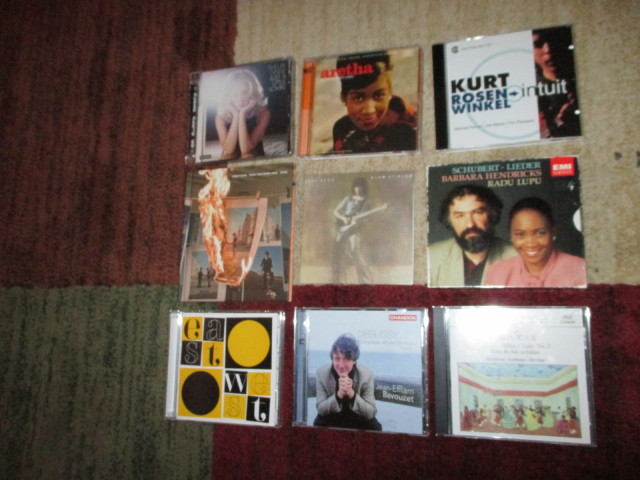
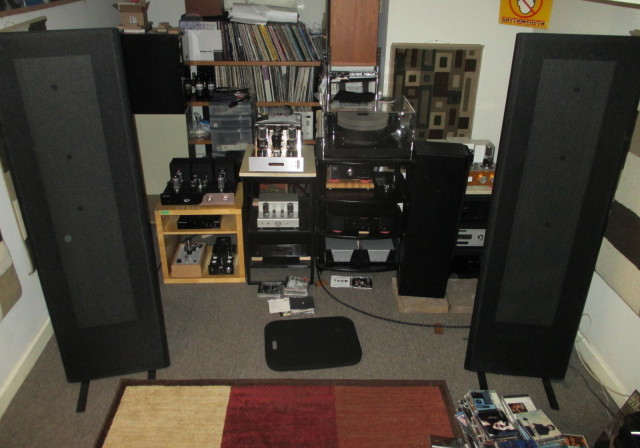
Well written review!
I’ve owned this amp for a little over 4 years now and absolutely love It! never a problem and amazing sound- A bargain!!
Link is dead; is this amp still for sale?
I don’t think these are made anymore. You could try asking them. info@psvane.com